ISSN
2307–3489 (Print), ІSSN
2307–6666
(Online)
Наука
та прогрес транспорту. Вісник
Дніпропетровського
національного університету залізничного
транспорту, 2020, № 2
(86)
ЗАЛІЗНИЧНА
КОЛІЯ ТА АВТОМОБІЛЬНІ ДОРОГИ
UDC
625.46:625.14-044.342:[519.145]
V. JOVER1*,
L. GASPAR2*,
S. FISCHER3*
1*Dep.
«Transport Infrastructure and Water Resources Engineering»,
Szechenyi Istvan University, Egyetem Sq., 1, Gyor,
Hungary, 9026,
tel. +36 (96) 61 35 44, e-mail vivi.jover@gmail.com, ORCID
0000-0003-4593-853X
2*Institute
of Transport Sciences Ltd (KTI), Than Karoly St., 3-5, Budapest, tel.
+36 (1) 37 19 36, e-mail gaspar@kti.hu,
ORCID
0000-0002-0574-4100
3*Dep.
«Transport Infrastructure and Water Resources Engineering»,
Szechenyi Istvan University, Egyetem Sq., 1, Gyor,
Hungary, 9026,
tel. + 36 (96) 61 35 44, e-mail fischersz@sze.hu, ORCID
0000-0001-7298-9960
Investigation of geometrical deterioration
of
tramway tracks
Purpose. The authors’ aim is to demonstrate their results of
analysis of deterioration of tramway tracks’ geometry. Methodology.
This article is a start of a PhD research. At first, the
superstructure systems and the used instrument were summarized, after
that the examination of running track, tramway stops, crossings and
turnouts. Findings. The authors examined separately the
running track, tramway stops, level crossings and turnouts. In case
of examination of running track, we evaluated the measurement results
according to two methods. To clarify the superstructure systems’
deterioration factor the authors had to do further measurements on
other tramway lines too. Originality. The fulfilled analysis
is the first step to the complex method that can consider and
determine the optimisation of life-cycle costs of tramway
superstructures. For this goal a lot of parameters, factors have to
be taken into consideration in the future. There are available
methods and models for different civil engineering areas, e.g. there
is very complex methodology related to road pavements, but there is
no special one related neither to railway tracks, nor tramway tracks.
Practical value. The authors tried to construct a
calculation and evaluation method that can assess the examined 6
different tramway superstructure types on the tramway line No. 1 in
Hungarian capital (Budapest). It is a very new reconstructed tramway
line that is the second longest one in Budapest. The authors showed
which type of superstructure system is the «best»
and the «worst»
based on own made measurements and calculation-evaluation methods.
The next aim of the authors is to start a PhD research in the
Multidisciplinary Doctoral School at Szechenyi Istvan University
(Győr, Hungary) with the continuation of this topic.
Keywords:
superstructure systems;
deterioration;
geometrical analysis;
tramway;
assessment
Purpose
The aim of this paper is to
demonstrate research results related to analysis of deterioration of
tramway tracks’ geometry. This paper deals with the 7
different superstructure systems in Hungary, and with these
deteriorations in a chosen tramway line.
This research is our first step
to diagnose the several superstructure systems’ life cycle cost
managements.
This paper is based on the MSc
thesis of V. Jóvér (one of the authors of this article) [5], the
defense was in 2020 February. She would like to start her PhD study
in 2020 September with the topic of «Optimisation of life-cycle
costs of tramway superstructures».
The authors made a short
literature review related to life time engineering and life cycle
cost calculation [4], tramway tracks’ superstructure types [3],
calculation of vertical deformation of railway tracks [2, 8], as
well as turnouts [6, 10, 11, 12, 13, 14, 15] and crossings [1]. In
the following the author summarize the relevant point from them.
Kurhan [8]
analysed the processes of emergence and development of
irregularities in the area of unequal vertical elasticity of railway
track using mathematical modelling. He adopted model consists of a
wheel set moving on inertia-free beam and resting on individual
supports. It is described by Lagrange differential equations. The
work introduced the hypothesis that the level of permanent strain is
distributed in proportion to the dynamic deflection derivative. In
[2] Kurhan investigated an entropy based deformation (accumulative)
calculation method for railway tracks. These are very important in
the area of tramway tracks, too, mainly for ballasted types tramway
tracks, too, mainly for ballasted types.
In tramway tracks there are a
lot of special turnouts. The literature [6, 10, 11, 12, 13, 14, 15]
investigated the turnouts, mainly the common crossings and the
frogs, as well as frog noses. The research team applied mainly
dynamic measurements techniques that are important in case of
tramway tracks, too. They dealt with the material, geometry, traffic
loading, etc. of special elements in turnouts. In Hungary according
to tramway tracks, turnouts constructed with Vignol and grooved rail
profiles are applied [7].
In case the level crossings are
investigated, there is an interested article [1]. In [1] the authors
performed statistical analysis showed a steady trend of growth of
inequalities in the area of the railway crossings. Generally, the
level of inequalities in the vertical plane increases in 1.3-3.2
times and in 1.2-2.0 times in the horizontal plane (compared
with areas that are outside crossing). During the deflection lines
of action in the area of railroad crossing concrete slabs work as
ribs that limit deflections of rail-tie grating. When placing the
wheels of the bogie before (or after) and within crossing the
calculated modulus of elasticity under the rail base, brought to the
point of wheels contact can vary up to 3 times.
Gáspár et al. [4] introduced
the main factors related to lifetime of different transport
infrastructure elements (road pavements, railway tracks and
bridges). There are many factors that influence the real and
prognosed lifetime, e.g. plans, traffic types and modes,
construction method, materials, maintenance, environment, etc.
Methodology
The invention of electricity
has taken a huge turn in development of public transport. The first
Hungarian tramway was opened in Budapest (capital of Hungary) in
1887, it was only one kilometer long. Since then the public
transport organizations which build the tramways are constantly
developing.
In case of tramways, 7
different superstructure systems (types) can be differentiated in
Hungary. They are chosen for each project, depending on factors such
as the installation site, the track closure and the geometric
characteristics. The 7 types are the following:
ballasted
track (Fig. 1-2);
concreted
ballasted track (Fig. 3-4);
concrete
slab track (Fig. 5-6);
ESCRB I.
track system track (ESCRB means elastically
supported continuous rail bedding system, in Hungarian RAFS
abbreviation is applied) (Fig. 7-8);
ESCRB II.
track system (Fig. 9-10);
ESCRB III.
track system (Fig. 11-12);
«large
slab» («big
panel») superstructure
(Fig.
13-14) [7].
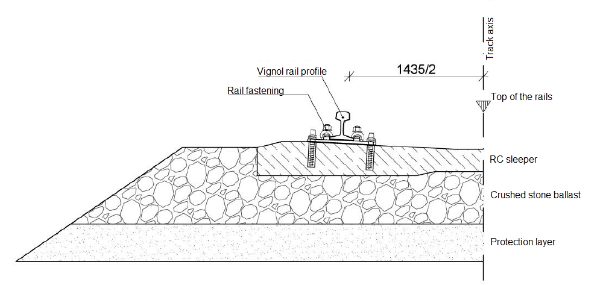
Fig. 1. Cross-section of ballasted track [7]
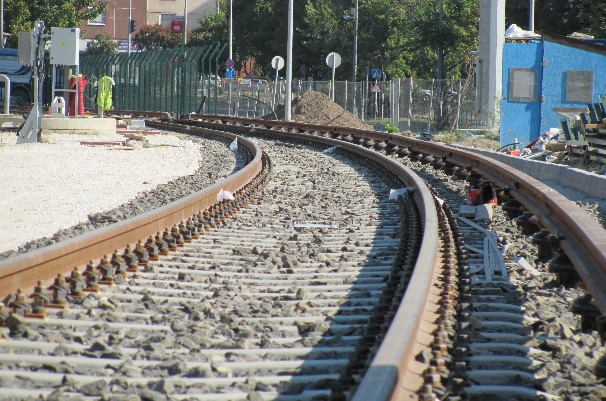
Fig. 2. Ballasted track superstructure
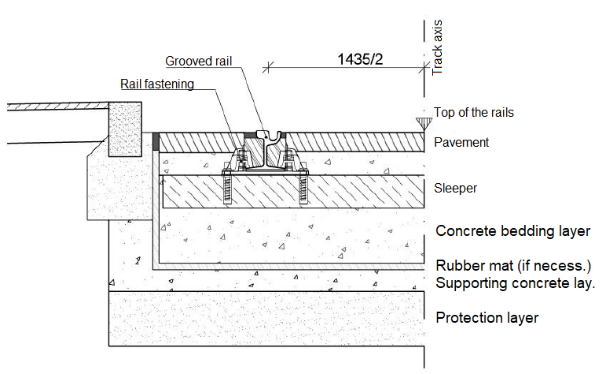
Fig. 3. Cross-section of concreted ballasted track [7]
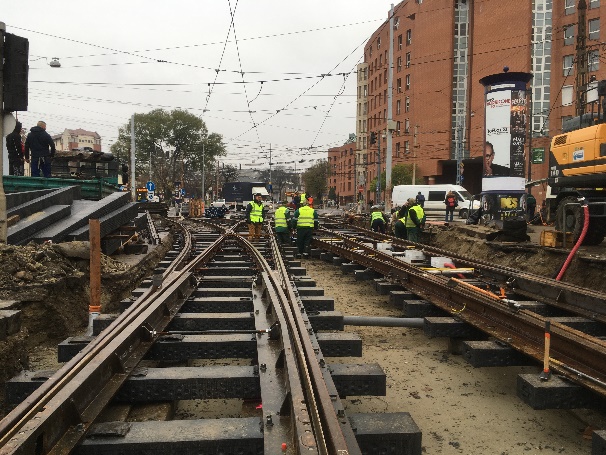
Fig. 4. Concreted ballasted track superstructure
during
construction
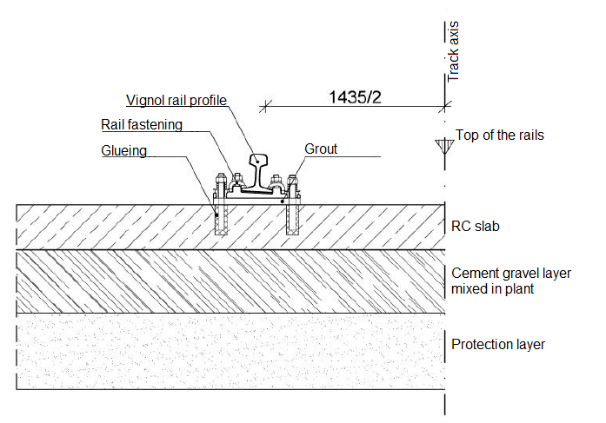
Fig. 5. Cross-section of concrete slab
track [7]
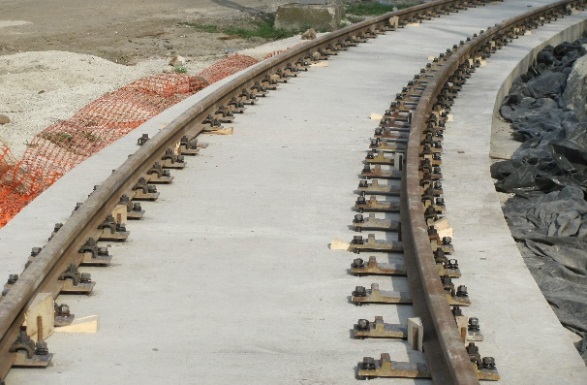
Fig. 6. Concrete slab track during construction
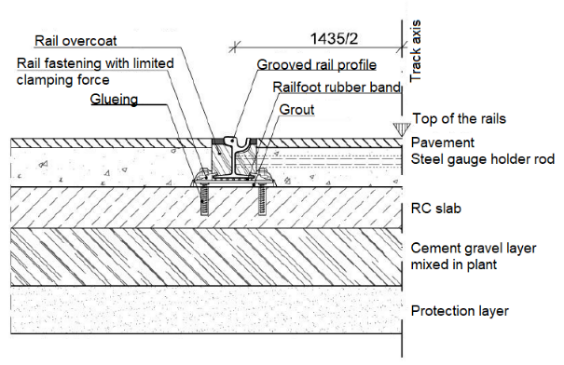
Fig. 7. Cross-section of ESCRB I. track system
[7]
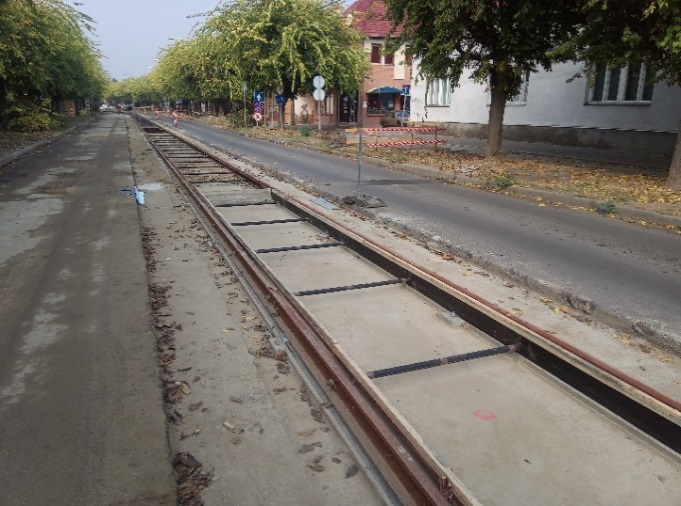
Fig. 8. ESCRB I. track system during construction
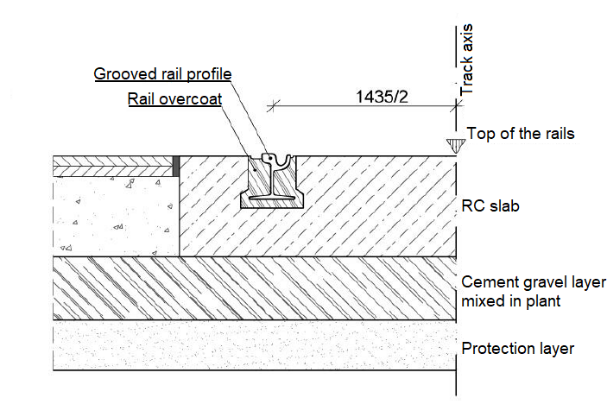
Fig. 9. ESCRB II. track system [7]
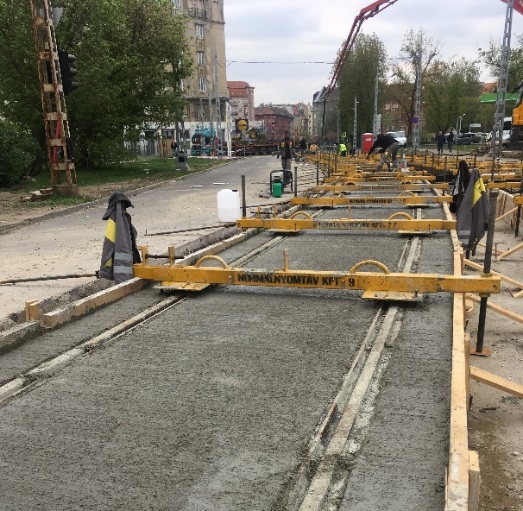
Fig. 10. ESCRB II. track system during construction
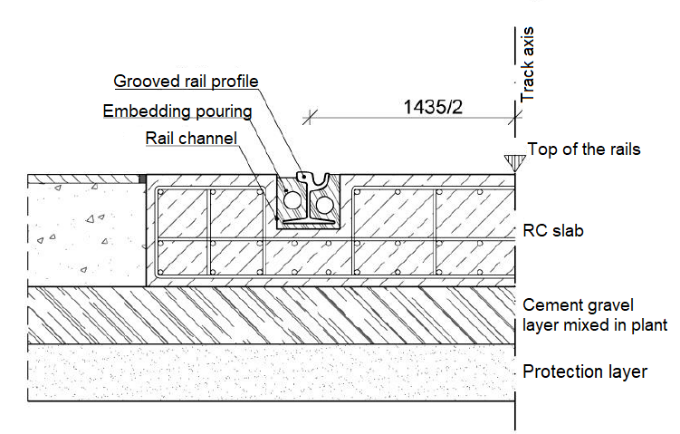
Fig. 11. Cross-section of ESCRB III. track system [7]
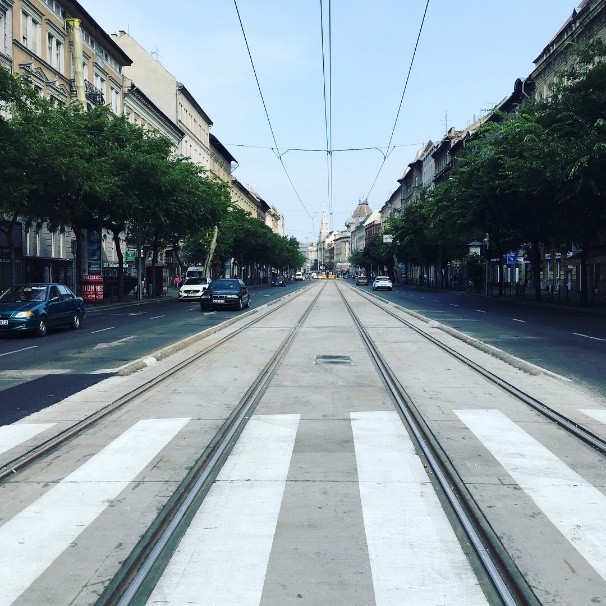
Fig. 12. ESCRB III. track system
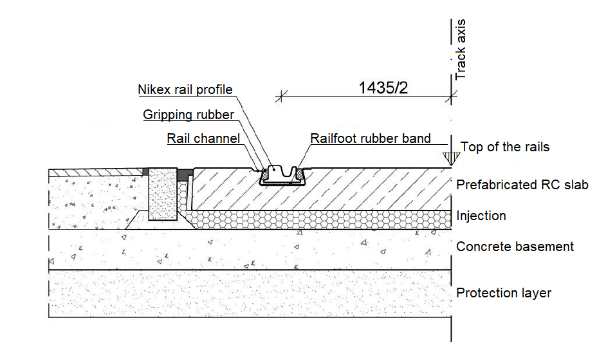
Fig. 13. Cross-section of «large slab»
(«big panel»)
superstructure [7]
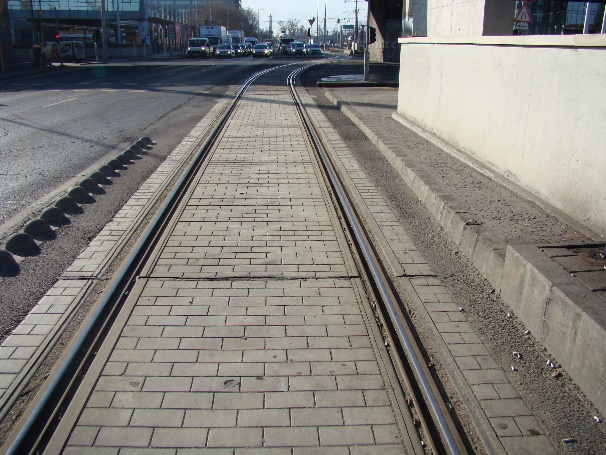
Fig. 14. «Large slab»
superstructure
The aim of the authors’
research was to investigate all the varieties (types) of tramway
superstructure systems in Hungary. The most important task during
choosing the right tramway line (or track) for the analysis was
equal allowable load and the more varieties of superstructure
systems at the same tramway. The authors selected the tramway line
No. 1 in the Hungarian capital (Budapest) where six different types
of tramway superstructure systems were able to be investigated.
The tramway line No. 1 in
Budapest was built for several years, applied the most modern
technical upgrades. The tramway was completed in 2019 and became the
longest tramway line in Budapest. It is 18.2 kilometers long and
contains 32 tramway stops, 35 crossings and 22 turnouts.
Tramway
tracks’ geometry measurements
Geometrical measurements were
executed in the right track at nights, between 0:30 AM and 3:30 AM
with TrackScan 4.01 instrument (see Fig. 15). This instrument can
measure the following parameters simultaneously:
The authors were able to
evaluate the measurement data with TrackScan Desktop software where
they applied the so called «B – maintenance limit» category in
accordance with Hungarian regulations related to tramway tracks.
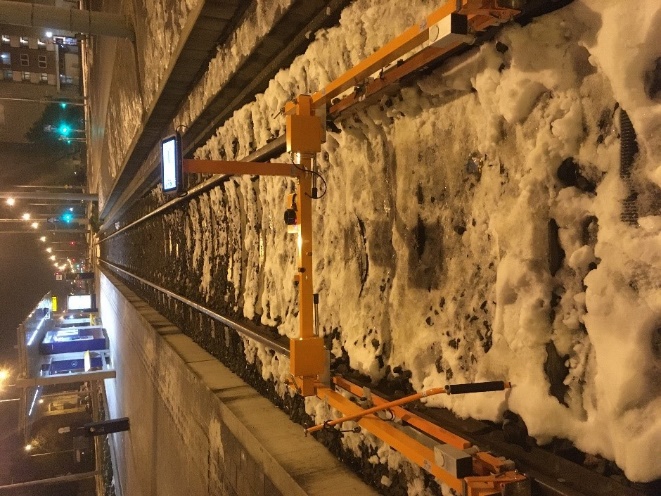
Fig. 15. TrackScan 4.01 Instrument
Examination
of deterioration of superstructure systems
To evaluate the measurement
data, a subjective scoring system was made with the following
parameters:
the type of the default;
the length of the default;
geometric
characteristics;
the length of superstructures;
speed of trams;
load of trams;
unit costs;
life-span.
Connecting to these parameters
the authors have assigned so called «weights», from which they
were able to calculate the «deterioration factor». The higher the
deterioration factor of a superstructure system, the more intense,
faster the track geometric deterioration.
Examination
of running track
The
evaluation of measurement data of running track manifested 140
defaults, they were the followings (Fig. 16):
After the evaluation the
authors had to check the length of defaults. In many cases, the
appearance of local defaults was caused by contaminated of grooved
rail profiles.
In case of superelevation
defaults two cases had to be considered:
the final tramway geometry
plans do not contain superelevation values but the measurement
results exceed the «B – maintenance limit» values, or
the final
tramway geometry plans contain superelevation values but the
measurement results also exceed the «B – maintenance limit»
values.
The authors
assessed the measurement results of running track according to two
methods detailed in the «Findings»
Chapter.
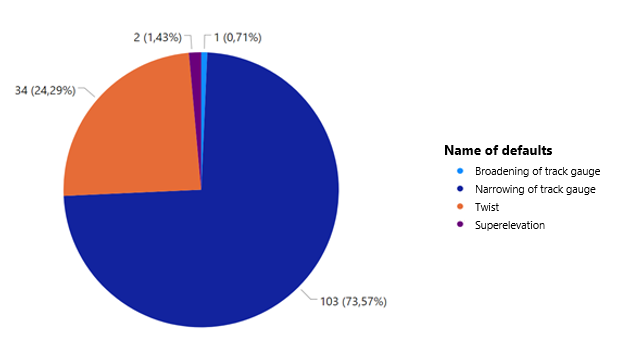
Fig. 16. The occurrence of defaults, as measured by «B –
maintenance limit»
Findings
In this Chapter the authors
summarize the results of the investigation related to the different
calculation and evaluation methods.
Evaluation
of measurement results – case #1
According to the case #1 the
authors applied the following parameters:
In this case instead of the
length of the default the total length of each superstructure system
to the number of defaults they contain was considered and compared.
Using the subjective scoring
system, the results are shown in Fig. 17. Figure 17 shows the
percentage of the deterioration factors of the various
superstructure systems. The benchmark is based on the most common
superstructure system on the tramway line which is grooved rail
profile, ESCRB on RC slab, with asphalt pavement. Its deterioration
factor is 100% (see Fig. 17). It seems the deterioration of the
superstructure type with Vignol 48 rail profile, crushed stone
ballast, and concrete sleepers is outstanding. The type of the
defaults is mostly narrowing of the track gauge.
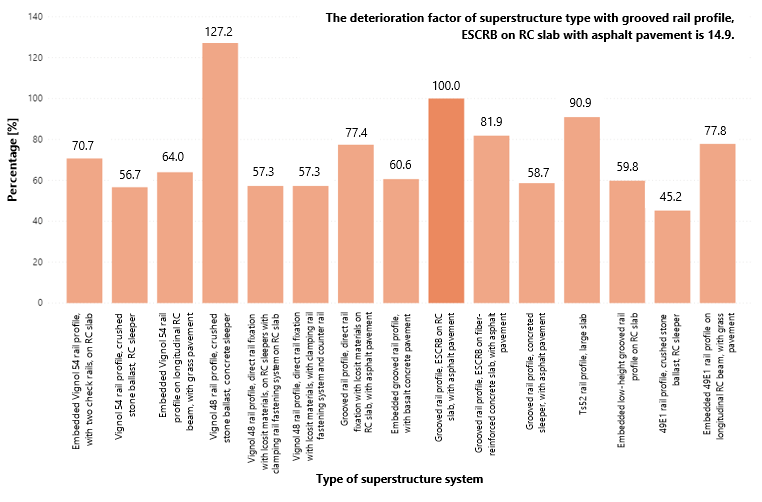
Fig. 17. The percentage of deterioration factors relative to each
other – first version
Evaluation
of measurement results – case #2
According to the case #2 the
authors applied the parameters below:
In this case instead of the
length of the superstructures the authors considered the length of
the defaults as follows:

The analysis of the measurement
results shows that as in case #1, the deterioration of the
superstructure type constructed with Vignol 48 rail profile, crushed
stone ballast, and concrete sleepers has the highest value – 14%
higher than the benchmark grooved rail profile, ESCRB on RC slab,
with asphalt pavement superstructure system (Fig. 18).
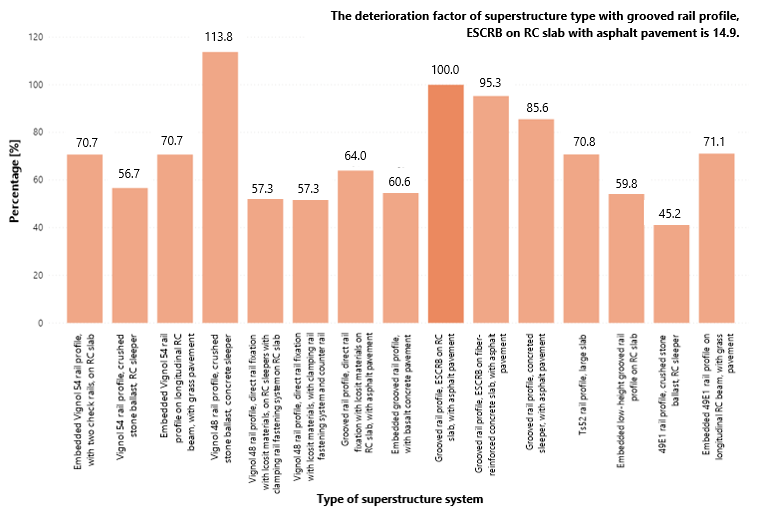
Fig. 18. The percentage of deterioration factors relative to each
other – second version
Comparing the results from
cases #1 and #2, it is noticeable that by modifying the parameters,
the values of deterioration factors for each superstructure system
have also been modified (Fig. 19). This can be explained by the
fact that these superstructure system types are only found in small
lengths over the entire tramway line, but many defaults have
occurred since they were constructed.
It is also important to
investigate the deterioration of different types of superstructure
systems as a function of elapsed time. The authors’ measurements
indicate a specific date and there isn’t other measurement date
since the construction, in this way the relationship between
deterioration of superstructure system and elapsed time since
construction is not able to be assessed, yet. The authors assume
that in practice this relation would produce an exponential function
that accelerates in time – but they have to prove this by further
measurements, calculations, investigations and evaluations.
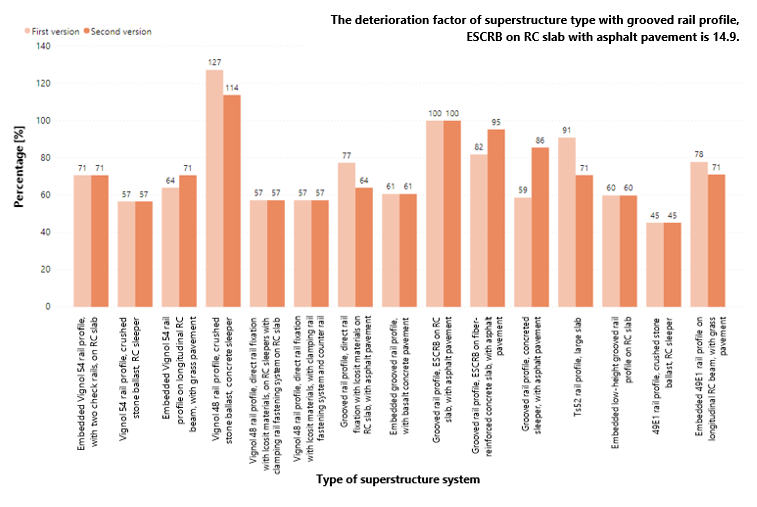
Fig. 19. The percentage of deterioration factors relative to each
other – first and second version
Evaluation of superelevation
values
In case of superelevation
defaults two cases had to be examined:
the final
tramway geometry plans do not contain superelevation values but the
measurement results exceed the «B – maintenance limit» values,
or
the final
tramway geometry plans contain superelevation values but the
measurement results also exceed the «B – maintenance limit»
values.
Based on the analysis of the
results the authors noticed that superelevation defaults appeared at
considerable lengths where the values should be 0 mm.
The ratio of the length of the
given superstructure system to the superelevation defaults on that
is also evaluated. This value is compared to the average of the
deterioration factors (average of cases #1 and #2), it should be
noticed that the deterioration of the superstructure type with
grooved rail profile, direct rail fixation with Icosit materials on
RC slab, with asphalt pavement is outstanding (Fig. 20).
Examination of tramway stops
Related to the evaluation of
tramway stops the authors used the following parameters:
Furthermore,
the cumulate lengths of platforms with the same superstructure
system were examined and they were compared to the cumulate number
of defaults they contain.
Using the subjective scoring
system, it should be noticed that the deterioration of the
superstructure type with Vignol 48 rail profile, crushed stone
ballast, as well as concrete sleepers is outstanding – as in the
case of running track (Fig. 21). The benchmark is based on the most
common superstructure system on the tramway line which is grooved
rail profile, ESCRB on RC slab, with asphalt pavement. Its
deterioration factor is 100%.
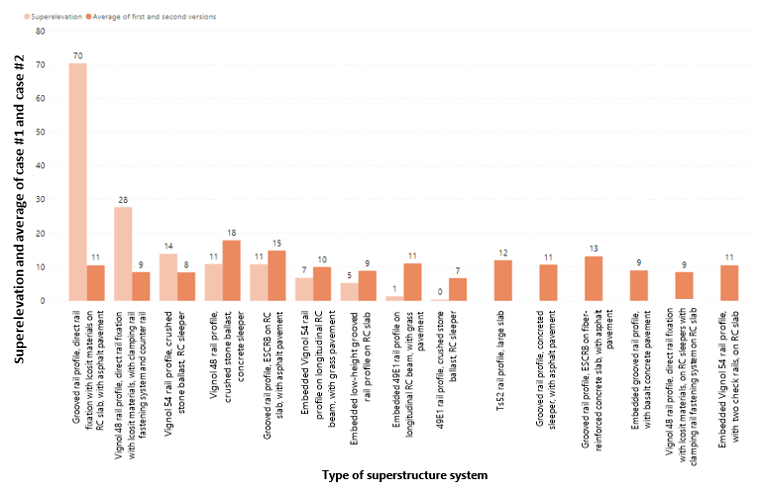
Fig. 20. The joint analysis of length of superelevation defaults and
average
of first and second versions’ deterioration factors
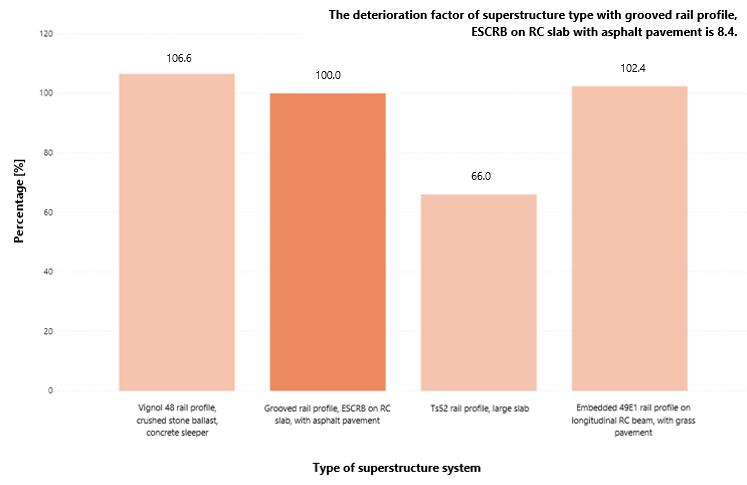
Fig. 21. The percentage of deterioration factors relative to each
other at tramway stops
Examination
of level crossings
Related to the evaluation of
level crossing the authors used the following parameters:
Furthermore, the authors
examined the cumulate lengths of crossings with the same
superstructure system and then compared it to the cumulate number of
defaults they contain.
The results show that the
deterioration of the grooved rail profile, ESCRB on RC slab, with
asphalt pavement superstructure system is outstanding (Fig. 22.). In
this case, the benchmark is the grooved rail profile, ESCRB on RC
slab, with basalt concrete pavement superstructure system.
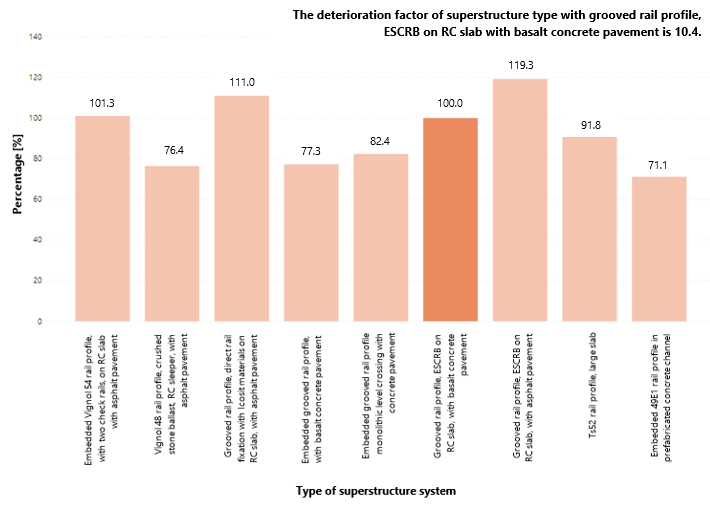
Fig. 22. The percentage of deterioration factors relative to each
other – in level crossings
Examination of turnouts
The tramway line No. 1 in
Budapest contains 22 pieces of turnouts in the right track, with
both grooved and Vignol rail profiles.
Generally, they are in good
condition, only two of them has superelevation defaults. In the
first case, the Phoenix 50/50 type turnout has 13.7 mm
superelevation default value on average. In the second case, the
B48 100/100e type turnout has 10.5 mm superelevation
default value on average.
Originality and practical
value
The authors investigated the
deterioration of tramway track geometry based on example of tramway
line No. 1 in Hungarian capital, Budapest. This tramway line was
reconstructed in the past few years and it contains 6 different
superstructure types from the 7, that can be applied in Hungary [7].
Because of this tramway line
works with the highest tram traffic in Budapest, as well as the
superstructures are relatively new, geometric measurements were
executed on the whole line in November and December 2019. The
measurement instrument was a Trackscan apparatus [9]. Based on the
measurements the authors made calculations and assessments according
to two cases (#1 and #2). They considered not only the running
tracks, but the tramway stops, level crossings, as well as the
turnouts, too.
In the analyses several
parameters were taken into consideration, e.g. the type of the
default, geometric characteristics, the length of superstructures,
speed of trams, load of trams, unit costs, and life-span. The
authors calculated deterioration factors according to the previous
parameters and made evaluations where they compared the different
tramway superstructure types in running tracks, tramway stops, level
crossings, turnouts.
The authors
determined – according to their measurements and calculations –
that the 49E1 rail profile, crushed stone ballast, RC sleeper type
superstructure is almost the ‘best’ and the Vignol
48 &rail
profile, crushed stone ballast, and concrete sleepers type
superstructure is the «worst»
for construction tramway tracks using a subjective scoring system.
The observation of geometrical
deterioration of tramway tracks’ is a very important part of the
railway tracks’ maintenance procedure. Because of it, the
knowledge has to be improved and as many methods as possible has to
be applied to learn more about tramway’s deterioration.
To clarify the superstructure
systems’ deterioration factor the authors have to execute further
measurements on other tramway lines, too. They can be Hungarian
tramway lines, as well as examples from abroad.
The next aim is to sentence
research plan related to one of the authors (Vivien Jóvér), and
start her PhD research at Széchenyi István University (Hungary).
Hopefully, she can submit her dissertation
in 2024 or 2025.
Acknowledgements
The publishing of this paper
was supported by EFOP 3.6.1-16-2016-00017 project.
List of reference links
Курган М. Б., Курган Д. М.,
Лужицький О. Ф. Дослідження нерівностей
колії в межах залізничних переїздів.
Наука та прогрес
транспорту.
2015. № 5 (59). С. 84–96.
DOI: 10.15802/stp2015/55341
Курган Д. М. Моделювання
накопичення деформацій залізничної
колії на основі ентропії системи. Наука
та прогрес транспорту.
2015. № 4 (58). С. 99–109.
DOI: 10.15802/STP2015/49215
Case studies in railway construction. Modern
tramway superstructures. URL:
http://www.sze.hu/~fischersz/Education/Case%20studies%20in%20railway%20construction/CSRC_Topic%2006_Modern%20tramway%20superstructures.pdf
(date of access 14.01.2020).
Gáspár L., Horvát F., Lublóy L. Közlekedési
létesítmények élettartama.
Universitas-Győr Nonprofit Kft. Győr, 2011, 324 p.
Jóvér V. Közúti vasúti
felépítmény-szerkezetek komplex elemzése. MSc thesis. Széchenyi
István Egyetem. Győr, 2019. 82 р. DOI:
10.13140/RG.2.2.16467.53284
Kovalchuk V., Sysyn M., Gerber U., Nabochenko
O., Zarour J., Dehne S. Experimental investigation of the influence
of train velocity and travel direction on the dynamic behavior of
stiff common crossings. Facta
Universitatis. Series : Architecture and Civil Engineering.
2019. № 3 (17). P. 345–356.
DOI: 10.22190/FUME190514042K
Közúti vasúti infrastruktúra tervezési
irányelvek. URL:
https://static.bkv.hu/ftp/ftp/fajlok/sarga_konyv/15.pdf
(date of access 14.01.2020).
Kurhan D. M. Modeling of development vertical
deformation of railway track. Наука
та прогрес транспорту.
2016. № 1 (61). P. 100–108. DOI:
10.15802/stp2016/61003
Metalelektro Railway
Diagnostic. Track Geometry Measurement.
URL: https://www.metalelektro.eu/track-geometry
(date of access 14.01.2020).
Sysyn M., Nabochenko O., Gerber U., Kovalchuk
V., Petrenko O. Common crossing condition monitoring with on board
inertial measurements. Acta
Polytechnica. 2019. Vol 4. Iss. 59.
P. 423–434. DOI: 10.14311/AP.2019.59.0423
Sysyn M., Gerber U., Nabochenko O., Kovalchuk V.
Common crossing fault prediction with track based inertial
measurements: statistical vs. mechanical approach. Pollack
Periodica. 2019. Vol. 2. Iss. 14. P.
15–26. DOI: 10.1556/606.2019.14.2.2
Sysyn M., Kluge F., Gruen D., Kovalchuk V.,
Nabochenko O. Experimental analysis of rail contact fatigue damage
on frog rail of fixed common crossing 1:12. Journal
of Failure Analysis and Prevention.
2019.
Vol. 21. Iss. 19. P. 1077–1092. DOI:
10.1007/s11668-019-00696-w
Sysyn M. Improvement of inspection system for
common crossings by track side monitoring and prognostics.
Structural Monitoring and Maintenance.
2019. Vol. 3. Iss. 6. P. 219–235.
DOI: 10.12989/smm.2019.6.3.219
Sysyn M., Gerber U., Nabochenko U., Li Y.,
Kovalchuk V. Indicators for common crossing structural health
monitoring with track-side inertial measurements. Acta
Polytechnica. 2019. Vol. 2. Iss. 59.
P. 170–181. DOI: 10.14311/AP.2019.59.0170
Sysyn M., Gerber U., Kluge F., Nabochenko O.,
Kovalchuk U. Turnout remaining useful life prognosis by means of
on-board inertial measurements on operational trains. International
Journal of Rail Transportation. 2019.
P. 1–23. DOI: 10.1080/23248378.2019.1685918
В. Йовер1*,
Л. ГАСПАР2*,
С. ФІШЕР3*
1*Каф.
«Інфраструктура транспорту та
гідротехніка», Університет Іштвана
Сечені, пл. Університетська, 1, Дьєр,
Угорщина, 9026, тел. +36 (96) 61 35 44, ел. пошта
vivi.jover@gmail.com, ORCID 0000-0003-4593-853X
2*ТОВ
«Інститут транспортних наук», вул. Тан
Кароли, 3-5, Будапешт, Угорщина, тел. +36
(1) 37 19 36,
ел. пошта gaspar@kti.hu, ORCID
0000-0002-0574-4100
3*Каф. «Інфраструктура
транспорту та гідротехніка», Університет
Іштвана Сечені, пл. Університетська,
1, Дьєр,
Угорщина, 9026, тел. + 36 (96) 61 35 44,
ел. пошта fischersz@sze.hu ORCID 0000-0001-7298-9960
ДОСЛІДЖЕННЯ погіршення
ГЕОМЕТРІЇ
трамвайних колій
Мета.
Основною метою статті є демонстрація
результатів аналізу погіршення геометрії
трамвайних колій. Методика.
Ця стаття є часткою дослідження в рамках
кандидатської дисертації. Спочатку
були узагальнені системи верхньої
будови колії та інструменти, використані
під час роботи, після чого була проведена
перевірка колії, зупинок трамвая,
перетинів колій і стрілочних переводів.
Результати.
Автори провели дослідження окремої
трамвайної колії, зупинок трамвая,
переїздів та стрілочних переводів. Під
час дослідження колії оцінювали
результати вимірювань відповідно до
двох методик. Для визначення фактора
зносу систем верхньої будови колії
провели додаткові вимірювання також
на інших трамвайних лініях. Наукова
новизна. Виконаний
аналіз є першим кроком складної методики,
яку використовують під час розгляду й
оптимізації витрат життєвого циклу
верхньої будови трамвайної колії. Для
досягнення цієї мети існує багато
параметрів, факторів, які необхідно
взяти до уваги в майбутньому. Наявні
методи й моделі, які використовують у
різних галузях цивільного будівництва,
наприклад, дуже складна методика,
пов’язана з дорожнім покриттям; але
не існує спеціальної методики, що
стосується залізничних або трамвайних
колій. Практична
значимість. Автори
спробували розробити методику розрахунку
й оцінки, за допомогою якої можна оцінити
6 різних типів верхньої будови трамвайної
колії на лінії № 1 в столиці Угорщини
(Будапешт). Це найновіша реконструйована
трамвайна лінія, друга за довжиною в
Будапешті. Визначили, який тип системи
верхньої будови колії є «найкращим» і
«найгіршим» на основі власних вимірювань
і методів розрахунку та оцінки. Проведене
дослідження авторів ляже в основу
написання кандидатської дисертації в
багатопрофільній аспірантурі при
Університеті Іштвана Сечені (Дьєр,
Угорщина).
Ключові слова:
системи верхньої будови колії; погіршення;
геометричний аналіз; трамвайні
лінії; оцінка
В. Йовер1*,
Л. ГАСПАР2*,
С. ФИШЕР3*
1*Каф.
«Инфраструктура транспорта и
гидротехника», Университет Иштвана
Сечени, пл. Университетская, 1, Дьер,
Венгрия, 9026, тел. +36 (96) 61 35 44, эл. почта
vivi.jover@gmail.com,
ORCID
0000-0003-4593-853X
2*ООО
«Институт транспортных наук», ул. Тан
Каролы, 3-5, Будапешт, Венгрия, тел. +36 (1)
37 19 36,
эл. почта gaspar@kti.hu,
ORCID
0000-0002-0574-4100
3*Каф.
«Инфраструктура транспорта и
гидротехника», Университет Иштвана
Сечени, пл. Университетская, 1, Дьер,
Венгрия, 9026, тел. + 36 (96) 61 35 44, эл. почта
fischersz@sze.hu,
ORCID
0000-0001-7298-9960
ИССЛЕДОВАНИЕ Ухудшения
геометрии
ТРАМВАЙНЫХ путей
Цель.
Основной целью статьи является
демонстрация результатов анализа
ухудшения геометрии трамвайных путей.
Методика.
Данная статья является частью исследования
в рамках кандидатской диссертации.
Сначала были обобщены системы верхнего
строения пути и инструменты, использованные
во время работы, после чего была проведена
проверка пути, остановок трамвая,
пересечений путей и стрелочных переводов.
Результаты.
Авторы провели исследование отдельного
трамвайного пути, остановок трамвая,
переездов и стрелочных переводов. Во
время исследования пути оценивали
результаты измерений в соответствии
с двумя методиками. Для определения
фактора износа систем верхнего строения
пути провели дополнительные измерения
также на других трамвайных линиях.
Научная новизна.
Выполненный анализ
является первым шагом сложной методики,
которую используют при рассмотрении
и оптимизации затрат жизненного цикла
верхнего строения трамвайного пути.
Для достижения этой цели существует
много параметров, факторов, которые
необходимо принять во внимание в
будущем. Существуют методы и модели,
которые используют в различных областях
гражданского строительства, например,
очень сложная методика, связанная с
дорожными покрытиями; но не существует
специальной методики, касающейся
железно-дорожных или трамвайных путей.
Практическая значимость.
Авторы попытались разработать методику
расчета и оценки, с помощью которой
можно оценить 6 различных типов верхнего
строения трамвайного пути на линии №
1 в столице Венгрии (Будапешт). Это самая
новая реконструированная трамвайная
линия, вторая по длине в Будапеште.
Определили, какой тип системы верхнего
строения пути является «лучшим» и
«худшим» на основании собственных
измерений и методов расчета и оценки.
Проведенное исследование ляжет в основу
написания кандидатской диссертации в
многопрофильной аспирантуре при
Университете Иштвана Сечени (Дьер,
Венгрия).
Ключевые слова:
системы верхнего строения пути;
ухудшение; геометрический анализ;
трамвайные линии; оценка
References
Kurhan, M. B., Kurhan, D. M., & Luzhytskyi,
O. F. (2015). Inequalities research of the track at the railroad
crossings. Science and Transport
Progress, 5(59), 84-96. DOI:
10.15802/stp2015/55341 (in Ukrainian)
Kurhan, D. M. (2015). Accumulated deformation
modeling of permanent way based on entropy system. Science
and Transport Progress, 4(58),
99-109. DOI: 10.15802/stp2015/49215 (in Ukrainian)
Case studies in railway construction. Modern
tramway superstructures. Retrieved from
http://www.sze.hu/~fischersz/Education/Case%20studies%20in%20railway%20construction/CSRC_Topic%2006_Modern%20tramway%20superstructures.pdf
(in English)
Jóvér, V. (2019). Közúti
vasúti felépítmény-szerkezetek komplex elemzése. MSc thesis.
Széchenyi István Egyetem. Győr. DOI:
10.13140/RG.2.2.16467.53284 (in Hungarian)
Kovalchuk,
V., Sysyn,
M., Gerber,
U., Nabochenko,
O., Zarour,
J., &
Dehne, S.
(2019).
Experimental investigation of the influence of train velocity and
travel direction on the dynamic behavior of stiff common crossings.
Facta Universitatis. Series:
Mechanical Engineering, 17(3),
345-356. DOI: 10.22190/FUME190514042K (in
English)
Gáspár, L., Horvát, F., & Lublóy, L.
(2011). Közlekedési létesítmények
élettartama. Universitas-Győr
Nonprofit Kft. Győr. (in Hungarian)
Közúti vasúti infrastruktúra tervezési irányelvek. Retrieved
from https://static.bkv.hu/ftp/ftp/fajlok/sarga_konyv/15.pdf (in
Hungarian)
Kurhan, D. M. (2016). Modeling of development
vertical deformation of railway track. Science
and Transport Progress, 1(61),
100-108. DOI: 10.15802/stp2016/61003 (in English)
Metalelektro Railway Diagnostic. Track Geometry Measurement.
Retrieved from https://www.metalelektro.eu/track-geometry (in
English)
Sysyn, M., Nabochenko, O., Gerber, U.,
Kovalchuk, V., & Petrenko, O. (2019). Common crossing condition
monitoring with on board inertial measurements. Acta
Polytechnica, 59(4), 423-434. DOI:
10.14311/ap.2019.59.0423 (in English)
Sysyn, M., Gerber, U., Nabochenko, O., &
Kovalchuk, V. (2019). Common crossing fault prediction with track
based inertial measurements: statistical vs. mechanical approach.
Pollack Periodica, 14(2),
15-26. DOI: 10.1556/606.2019.14.2.2 (in
English)
Sysyn, M., Kluge, F., Gruen, D., Kovalchuk, V.,
& Nabochenko, O. (2019). Experimental Analysis of Rail Contact
Fatigue Damage on Frog Rail of Fixed Common Crossing 1:12. Journal
of Failure Analysis and Prevention, 19(4),
1077–1092. DOI: 10.1007/s11668-019-00696-w
(in English)
Sysyn, M. (2019). Improvement of inspection
system for common crossings by track side monitoring and
prognostics. Structural Monitoring and
Maintenance, 3(6),
219-235. DOI: 10.12989/smm.2019.6.3.219 (in
English)
Sysyn, M., Gerber, U., Nabochenko, U., Li, Y., &
Kovalchuk, V. (2019). Indicators for common crossing structural
health monitoring with track-side inertial measurements. Acta
Polytechnica, 59(2),
170-181. DOI: 10.14311/AP.2019.59.0170
(in English)
Sysyn, M., Gerber, U., Kluge, F., Nabochenko,
O., & Kovalchuk,
U. (2019). Turnout remaining useful life prognosis by means of
on-board inertial measurements on operational trains. International
Journal of Rail Transportation, 1-23.
DOI: 10.1080/23248378.2019.1685918
(in English)
Received: November 18, 2019
Accepted: March 19, 2020